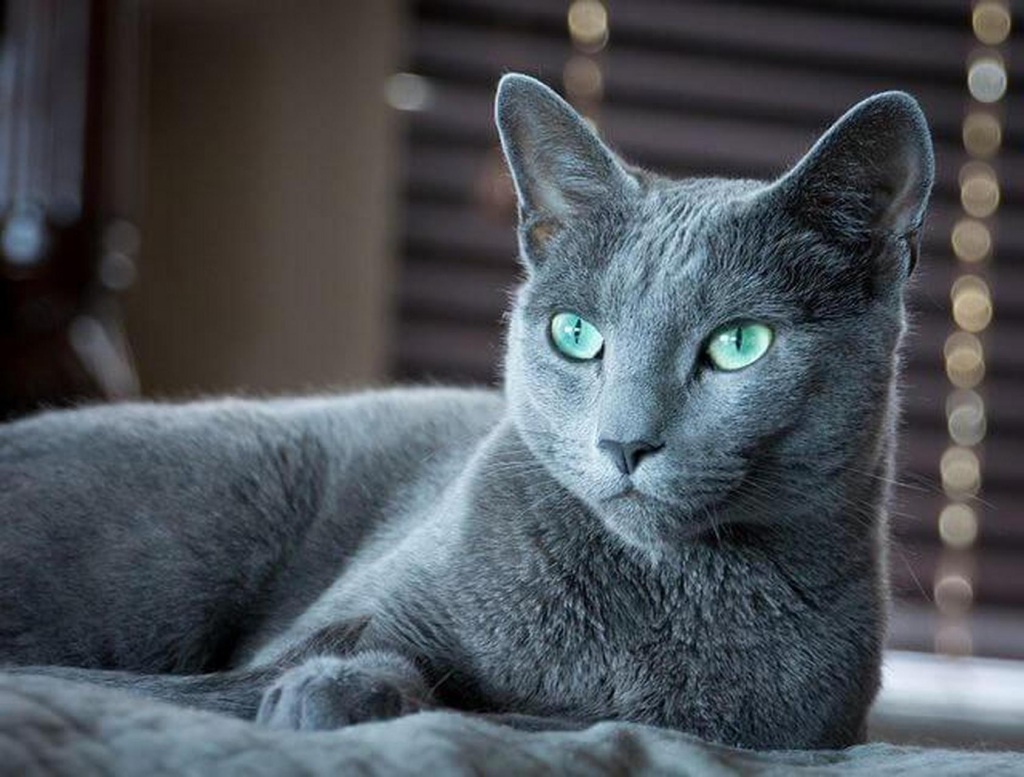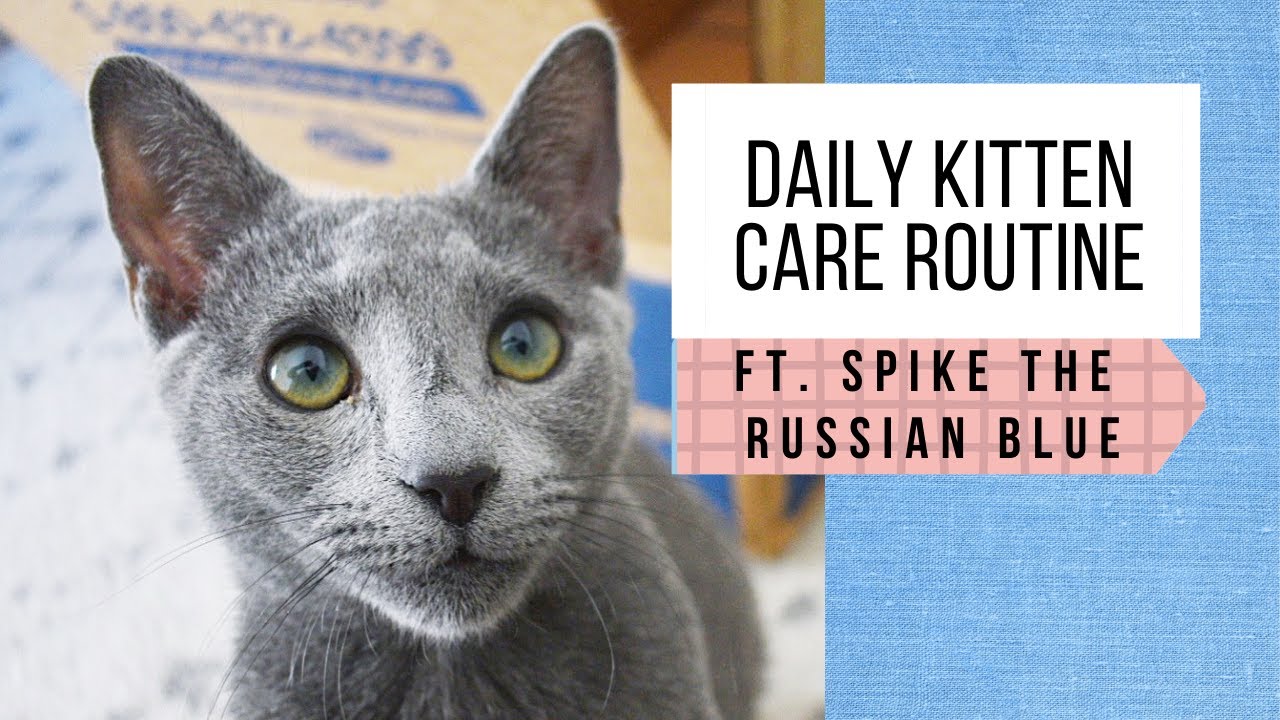
Imagine a cat that combines the grace of a panther, the intellect of a scholar, and the loyalty of a lifelong companion. Meet the Russian Blue—a breed shrouded in mystique and adored for its striking silver-blue coat, hypnotic green eyes, and a personality that blends serenity with playful curiosity. But what truly sets this breed apart? Let’s unravel every detail, from its frosty origins to the secrets of its low-maintenance care.
1. Anatomy of a Russian Blue: Physical Traits Decoded
Names & Historical Aliases
- English Name: Russian Blue
- Historical Aliases: Archangel Cat (linked to Russia’s Arkhangelsk port), Foreign Blue (in early European registries), Maltese Cat (a misnomer from 19th-century America).
Size and Build
- Body Type: Lean, muscular, and elongated. Often compared to a “greyhound in cat form.”
- Weight: Males: 10–15 pounds; Females: 7–12 pounds—a significant size difference that impacts diet and exercise needs.
- Height: 10–12 inches at the shoulder, with a body length of up to 30 inches (tail included).
Distinctive Features
- Tail: Long, flexible, and tapering to a fine point. Covered in dense fur that mimics a plume.
- Ears: Large, wide-set, and triangular with translucent tips. The inner ear has sparse hair, making them appear almost “glow-in-the-dark.”
- Eyes: Vivid green, almond-shaped, and spaced widely. Kittens start with yellow eyes that transition to emerald by age 2.
- Coat:
- Color: Uniform blue-gray with silver tipping—a genetic trait that creates a “glittering” effect under light.
- Texture: Double-layered; a soft undercoat beneath a water-resistant topcoat. Described as “plush” or “velvety.”
- Shedding: Minimal shedding due to a shorter undercoat. Ideal for allergy sufferers (more on this later).
2. Origins: From Arctic Ports to Global Fame
Myth vs. Reality
Legend claims Russian Blues were the pets of Russian tsars, but historians trace their roots to Arkhangelsk, a frosty port city near the White Sea. Sailors brought them to England in the 1860s, where they debuted at London’s Crystal Palace in 1875 as “Archangel Cats.”
Survival Through Adversity
World War II nearly wiped out the breed. Post-war, breeders crossed Russian Blues with Siamese and British Shorthairs to diversify genetics. By the 1960s, dedicated programs restored their original traits, leading to formal recognition by the Cat Fanciers’ Association (CFA) and The International Cat Association (TICA).
3. Personality: The Russian Blue’s Dual Nature
Quiet Charm Meets Playful Genius
- Temperament: Reserved with strangers but deeply affectionate with family. Known to “choose” a favorite human.
- Intelligence: Masters puzzle toys, learns tricks (e.g., fetching), and even opens doors. Cat behaviorist Dr. Sarah Ellis notes: “Their problem-solving skills rival those of a Border Collie.”
- Social Behavior:
- Thrives in calm environments; avoids loud noises.
- Bonds closely with children and seniors but may hide during parties.
- Gets along with dogs if introduced gradually.
The “Shadow” Trait
Russian Blues often follow owners room-to-room, earning the nickname “Velcro Cat.” Yet, they’re not clingy—they observe quietly from a distance.
4. Ideal Owners: Is a Russian Blue Right for You?
Step 1: Lifestyle Compatibility Quiz
- Perfect For:
- Allergy-prone individuals (low Fel d 1 protein in saliva).
- Homebodies or remote workers who value quiet companionship.
- Families with gentle older children.
- Avoid If:
- You want a lap cat that craves constant cuddles.
- Your home is noisy or chaotic.
Step 2: Preparing Your Home
- Vertical Space: Install cat trees or shelves—they love climbing!
- Mental Stimulation: Rotate puzzle feeders and interactive toys weekly.
- Safe Hideaways: Provide enclosed beds or cardboard boxes for retreats.
5. Health Risks: Prevention and Care
Common Ailments
- Urinary Tract Disease (UTD):
- Prevention: Wet food diets, ample water intake, and stress reduction.
- Signs: Frequent litter box visits, blood in urine.
- Obesity:
- Target Weight: Keep males under 15 lbs, females under 12 lbs.
- Tip: Use slow feeders and avoid free-feeding.
- Gingivitis:
- Brush teeth 2–3x weekly with vet-approved toothpaste.
Lifespan Secrets
With proper care, Russian Blues live 15–20 years. The oldest recorded lived to 25!
6. Grooming: The 4-Step Routine for a Lustrous Coat
Step 1: Brushing
- Tools: Use a stainless-steel comb or rubber brush.
- Frequency: Weekly—increase during spring shedding.
Step 2: Bathing
- Rarely needed. If required, use a hypoallergenic shampoo and lukewarm water.
Step 3: Nail and Dental Care
- Trim nails every 2 weeks.
- Brush teeth as mentioned above.
Step 4: Eye and Ear Cleaning
- Wipe eyes gently with a damp cloth to remove discharge.
- Clean ears monthly with a vet-recommended solution.
7. Feeding: A Protein-Powered Diet
Dietary Must-Haves
- High Animal Protein: 40–50% of diet (chicken, turkey, fish).
- Low Carbohydrates: Avoid fillers like corn or wheat.
- Hydration: Offer a water fountain to encourage drinking.
Sample Meal Plan
- Morning: 1/4 cup dry kibble (grain-free).
- Evening: 3 oz wet food (pâté-style).
- Treats: Freeze-dried chicken or cat grass.
8. Training Your Russian Blue: Yes, It’s Possible!
Trick Training
- Clicker Training: Use a clicker and treats to teach “sit” or “high-five.”
- Leash Walking: Start indoors with a harness; gradually move outdoors.
- Fetch: Use crinkly balls or toy mice—their retriever instincts will shine!
9. FAQs: Top Questions Answered
- Are Russian Blue cats really hypoallergenic?
While no cat is 100% hypoallergenic, their low-shedding coat and reduced Fel d 1 protein make them a top choice for allergy sufferers. - How to stop a Russian Blue from scratching furniture?
Provide sisal-covered posts and reward use with treats. Apply double-sided tape to deter scratching. - Why does my Russian Blue stare at me?
They’re highly observant! Staring is their way of bonding or signaling curiosity. - Do Russian Blues like other cats?
Yes, but introduce slowly. They prefer calm feline companions. - Can Russian Blues adapt to apartment living?
Absolutely! Their moderate energy levels suit smaller spaces.
10. The Russian Blue in Pop Culture
- Film & TV: Featured in Harry Potter as the inspiration for Dobby’s ears.
- Literature: Helen Hunt Jackson’s 19th-century writings reference “Archangel Cats.”
- Royalty: Rumored to have been gifted to Queen Victoria by Russian diplomats.
Conclusion: Why the Russian Blue Reigns Supreme
From their glittering coats to their Einstein-level smarts, Russian Blues are a breed like no other. Whether you’re drawn to their hypoallergenic fur, enchanted by their quiet loyalty, or simply captivated by their emerald gaze, this cat promises a lifetime of elegance and companionship. Ready to welcome one into your home? Remember: patience and respect for their refined nature will unlock a bond richer than any fairy tale.
This guide integrates care standards from the CFA, TICA, and insights from veterinarians like Dr. Karen Becker. Always consult a professional for tailored advice.


